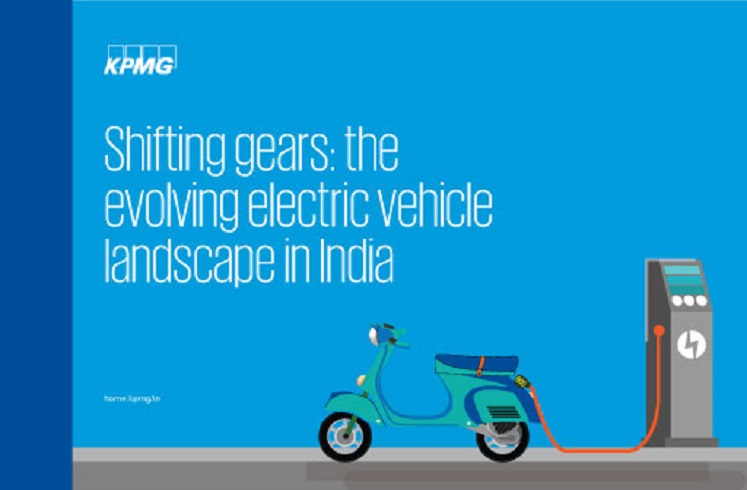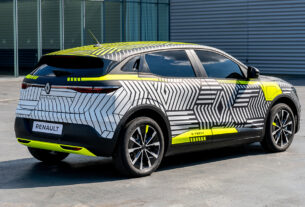The latest report predicts a 25 to 35 percent penetration of EVs in two-wheeler segment, and 65 to 75 per cent in 3Ws by 2030, followed by passenger cars and buses. It also calls for a collaborative work towards an integrated policy, creating a conducive ecosystem for India’s electric mobility vision.

KPMG and CII has launched a report titled, “Shifting gears: the evolving electric vehicle landscape in India.” This report offers a holistic view of how EVs are emerging as a disruptive force, with OEMs making investments in product development, players across the ecosystem testing and discovering new innovative business models and use cases. Since the running cost of EVs is much lower than ICE vehicles (one-tenth for 2W and 3W), a strong case emerges for a shift to EVs in B2B. Many large B2B players in e-commerce, grocery, food, courier delivery have been piloting EVs and some have moved into advanced stages of deployment. Battery swapping, Energy as a Service etc. are being deployed to reduce upfront investment, improve vehicle uptime, eliminate range anxiety etc. Thus, we see the entire EV ecosystem come together and make EV ownership with accelerated timelines a reality.
Rohan Rao, Partner – Industrials and Automotive, KPMG in India said, “ Electric Vehicles (EVs) are on course to fulfil their promise as a game changer for the automobile industry. Two-wheeler (2W) and Three-wheeler (3W) auto segments are likely to lead the adoption curve followed by e-buses and passenger taxis. Directionally several factors, including availability of charging infrastructure, robust financing ecosystem, reduced battery prices and increased customer awareness, are paving the way for new era of EV adoption. The government is also pushing EV policy to address some of the adoption barriers. EV is, thus, emerging as a disruptive force, with several players experimenting with and discovering new innovative business models and use cases. Since the running cost of EVs is much lower than Internal Combustion Engine (ICE) vehicles (one-tenth for 2W and 3W), a strong case emerges for a shift to EVs in B2B segment. Ecosystem creation is the key. A widespread network of charging stations is vital for ensuring the fast adoption of EVs. Moreover, the local component ecosystem needs to be established. The government has launched a Phased Manufacturing Programme under FAME-II through which it is pushing the indigenisation of parts. The government has also outlined plans to set up a battery manufacturing plants in India Overall, there seems to be great promise in India’s EV story, as all the above factors come together to drive long-term growth.”
Jeffry Jacob, Partner, Management Consulting – Industrials and Automotive, KPMG in India said, “ EVs are undoubtedly the way forward for sustainable mobility and is increasingly gaining traction across the world. In India, the charge is being led by 2W and 3W segments, followed by public transport and non-public passenger fleet. One of the biggest hurdles India currently faces is our limited ecosystem for EVs. Significant number of critical components still continue to be largely imported and the charging infrastructure is largely inadequate. However the industry and Government are proactively working to address these constraints and are taking steps in the right direction. Several leading states have released EV policies with clear focus on driving increased adoption through both demand and supply led incentives. Subsidies are being linked to higher level of localization to promote ‘Make in India’ and establish a strong EV ecosystem in India. India has already achieved global excellence in the automotive industry and is a major exporter of vehicles and critical components globally. With the right focus, collaborative approach by all stakeholders and a pragmatic policy we can help drive clean mobility and be on the forefront in transitioning to a fossil free future as well.”
The report also highlights the Total cost of ownership (TCO) analysis for different vehicle segments, few models that have been introduced in the Indian market to boost the adoption of EVs, and how the B2B segment is likely to lead growth in the next few years on account of established use cases, fixed/ pre-defined routes and cost savings due to higher utilisation.
Key Highlights of the report
- KPMG in India expects 25 to 35 per cent 2W penetration, and 65 to 75 per cent in 3Ws by 2030
- 4W passenger vehicle (PV) electrification is expected to follow, with 10 to 15 per cent penetration in the personal segment and 20 to 30 per cent in the commercial one by 2030
- About 10 to 12 per cent of the overall market for buses is expected to be electrified by 2030
- Innovative business models such as battery swapping have emerged and will become mainstream to enable widespread EV adoption
- In line with Make-in-India initiatives and global supply chain realignments, the government is strongly pushing the localization of production to achieve the twin objectives of self-reliance and job creation
- To drive EV adoption, Original Equipment Manufacturers (OEMs) and the government, both at state and central levels, need to work collaboratively towards an integrated policy, creating a conducive ecosystem for India’s electric mobility vision
- Currently, only a few state EV policies provide guidelines and incentives on battery recycling. Given this, a coherent recycling policy is the need of the hour
Key gaps in the existing policy ecosystem and our recommendations
- State EV policies could lay a greater focus on demand incentives that shall bring down the upfront cost differential
- State EV polices could have certain targets for conversion of EVs, at a segment level or for a particular industry/use case
- Setting up of adequate charging infrastructure is key to encourage users to consider EVs
- EVs could be promoted by encouraging users to purchase/use EVs over ICE vehicles with measures such as increasing road tax/registration fees on ICE vehicles, levying cess on the sale of petrol/diesel or surcharge on parking, providing incentives on scrapping and deregistering of ICE vehicles
- The vehicle scrappage policy is expected to spur the adoption of EVs
- As more EVs enter the market, there is a need to formulate clear policies on sustainable end-of-life and disposal practices for the EV industry
- Corporate average fuel economy (CAFE) norms to mandate automakers to have a certain percentage of their vehicle sales as electric




